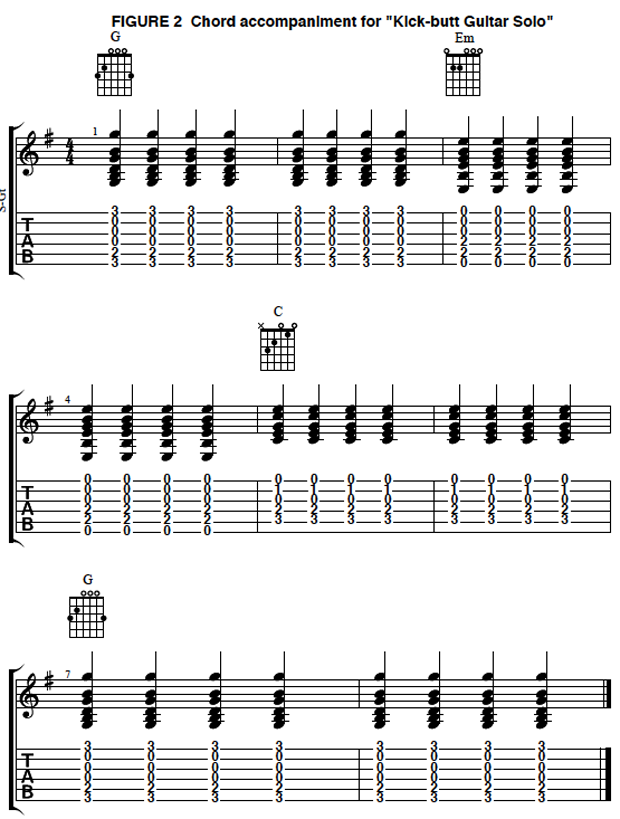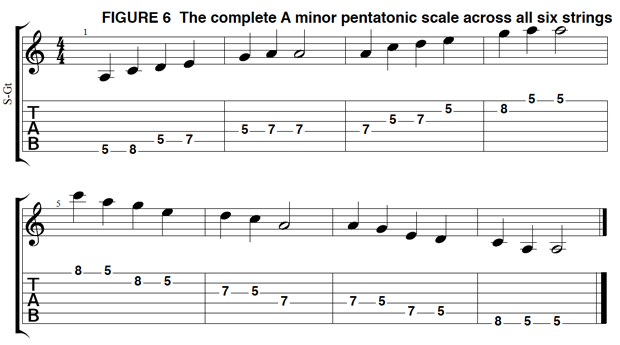
Hello. My name is Mark Hale, and I teach general music and guitar to elementary school students, grades K-4, in Nashville.
Having done this for a few years and experimented with various approaches, I have come up with what I believe to be a very effective and fun approach to teaching young, beginner-level students how to tap into the creative part of their brains and improvise melodies. I’d like to share this approach with you. Here’s how I go about this challenging task, by grade level, using the piano at first, then transitioning to guitar.
Improvising on the piano, grades K and 1
I explain what that big word improvisation means then immediately put the kids on electronic keyboards. They already know some basic rhythm patterns, which I initially teach them using percussion instruments. I find that, for this type of exercise, it actually helps to give the students some parameters, or boundaries, which makes it kind of like a game and less daunting, and tell them that they can only use the notes C, D and E (marked on the keys).
They are to use their index finger and “make up” some rhythm patterns using only one note at first, then two, then three. I, meanwhile, provide guitar accompaniment, playing the chord progression C-G-Am-F, four beats on each chord. I call this lesson “Cats, Dogs and Elephants are Stinky” and sing those words after the students have improvised for a few bars. This exercise can also be transposed to the key of G, with me playing the chords G, D, Em and C and the students playing the notes G, A and B.
Improvising on the guitar, grades 1 and 2
Essentially same approach as above, but, with the guitar, a brief explanation and demonstration are needed to show how to hold the instrument properly and use their hands and fingers to “squeeze” and “pinch” the strings like a cats claw. I only let them use two notes at first—the open high E and G on the third fret. I start by having the student pinch the first string’s “third box” (fret, in this case, the G note), fretted with their index finger, and have them say or sing their first name and play that note in the same rhythm. For example, “Jessica” would be three sounds; “Paul” would be one sound. I then tell them to lift their finger off the string and similarly play the open E note in the rhythm of their last name.
All the latest guitar news, interviews, lessons, reviews, deals and more, direct to your inbox!
To help the students remember the notes, I also have them sing and play them with the words “three" and "open” (see FIGURE 1).

Once they feel comfortable doing this, I accompany them with the chord progression G-Em-C–G, eight beats on each chord (see FIGURE 2).

They are now improvising, or as I like to proclaim, playing a “Kick-butt Guitar Solo.” I take a similar approach with my second graders but with the notes A and C on the first string’s fifth and eighth frets (see FIGURE 3), a fragment of the A minor pentatonic scale, which they will become more acquainted with later), accompanying them with a basic 12 bar-blues rhythm pattern in A (see FIGURE 4). I’ll also have them sing the numbers “five” and “eight” on pitch to help.



Improvising on the piano, grades 2-4
I use this same kind of exercise-game with my older students, but now I introduce them to the complete A minor pentatonic scale (A C D E G) and tell them they can only play those five notes, which are marked on the keyboard while I play the 12-bar blues progression in A for accompaniment. To give this lesson a more rocking rhythmic punch, I add a backbeat, provided by having one student play the drums using “foot-hand” technique (kick–snare) on a virtual drum kit, compliments of the TableDrum iPad app. (I can control the volume by running the audio signal through an amplifier.) Eventually, I move the percussionist away from the app and onto a real drum set.
Improvising on the guitar, grade 3
This is essentially the same A minor pentatonic lesson plan, but here I start out where the students left off in second grade with the fifth-position A and C notes. Using tablature as a visual aid, I show them the shape of the A minor pentatonic scale and how they can do the same fifth-to-eighth-fret move on the B string (see FIGURE 5). They are now improvising using four notes—A, C, E and G.

Improvising on the guitar, grade 4
Picking up where we left off in third grade, I complete the scale using tablature with fret-hand fingerings as a teaching tool, starting on the “big E” string (see FIGURE 6).

Once the students are comfortable with this, I have them play through the first five notes of the scale in a rhythm of quarter notes and then go backwards to the starting note (see FIGURE 7) as I accompany them with an A barre chord, strummed in an eighth-note rhythm. I call this the “Pentatonic Jam."

Photo: Rob Davidson
Mark Hale teaches general music and guitar to elementary school students, grades K-4, in Nashville.
The VH1 Save The Music Foundation is a nonprofit organization dedicated to restoring instrumental music education programs in America¹s public schools, and raising awareness about the importance of music as part of each child¹s complete education. Get involved at vh1savethemusic.org.
















